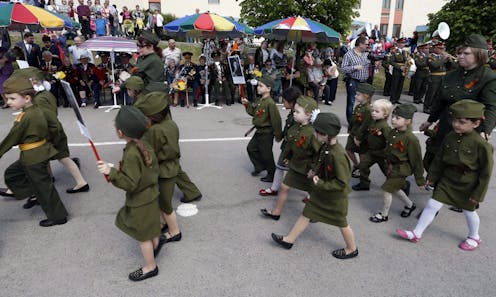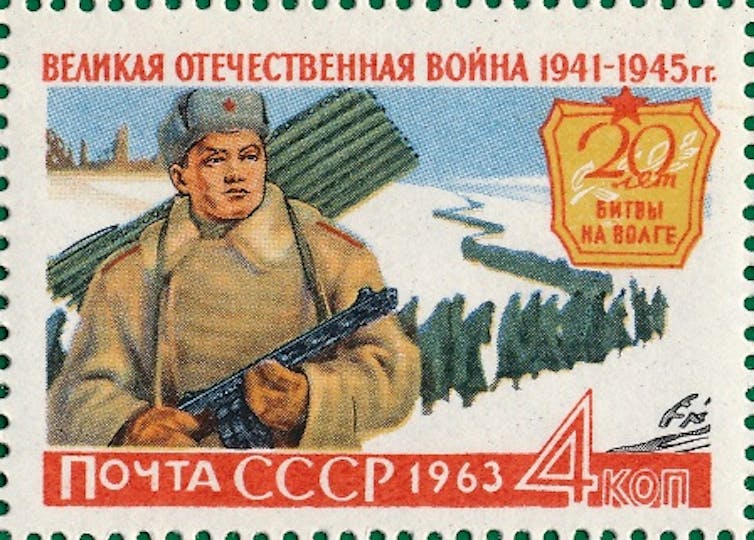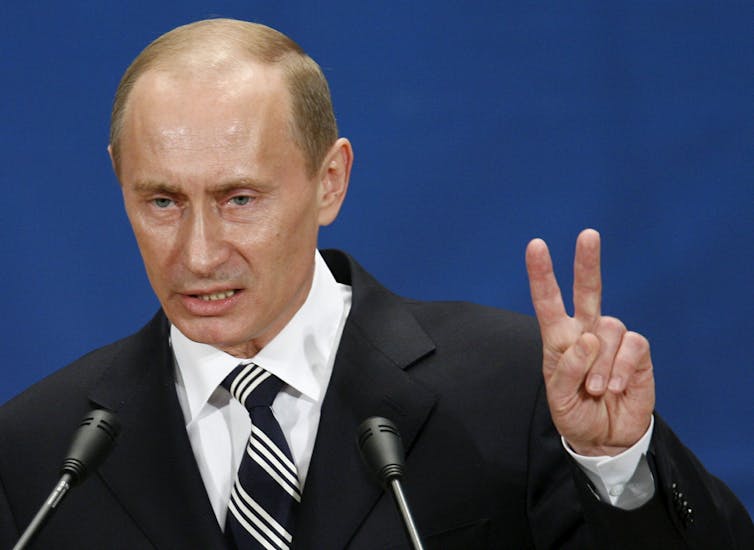

Curious Kids is a series for children of all ages. Have a question you’d like an expert to answer? Send it to CuriousKidsCanada@theconversation.com.
I know that Putin wants to take over all of Ukraine’s land but what is his exact reason for wanting the land? Is it for the U.S.S.R. again? In 1991 Ukraine officially declared itself as an independent country, but why does he want the land now? Why not eight years earlier? — Annelise, 14, Cape Breton, N.S.
For many centuries Russia and Ukraine were part of the same country, first as Kievan Rus and then the Russian Empire. The Russian Empire collapsed in 1917, partly because some people living there wanted their own countries.
Although some Ukrainians wanted independence, the new Soviet leaders wanted to keep Ukraine. In 1922, the Bolshevik government in Russia forced Ukraine into the Soviet Union.
The Soviet Union
The Soviet Union (also called the Union of Soviet Socialist Republics, or U.S.S.R.) was a very different country from the Russian Empire. It had a socialist government, which meant that wealth was supposed to be spread more evenly among its population than it was in Europe and North America.
The Soviet Union was in many ways more powerful than the Russian Empire. When Adolf Hitler’s Nazi Germany attacked the Soviet Union in June 1941, the Soviets fought hard to stop Hitler from taking over their country. Russians, Ukrainians and many people from other countries in the U.S.S.R. fought together. Some started to think that they were as much Soviet people as they were Russian or Ukrainian.

After the Second World War there was a long period of history known as the Cold War, when the Soviet Union and the western countries like the United States were in disagreement over how the world should be organized. The Soviet side thought that the most important principle was equality. The western side thought that individual freedoms were more important.
The end of the Soviet Union
In December 1991, the Soviet Union collapsed and broke up into smaller parts. One of those parts was Russia, another was Ukraine.
The U.S.S.R. collapsed for many reasons including economic problems and political fighting between its leaders over whether it should continue to be socialist or not. In the West many leaders thought that they had won the Cold War because the Soviet Union was now gone.
Although some were pleased that their countries could now be separate from Russia, many were unhappy that the powerful Soviet Union had collapsed. One of those people was Vladimir Putin. In 2005, when he was leader of Russia, Putin described the collapse of the Soviet Union as a “catastrophe.”
Putin vs. NATO
At the end of the Cold War western leaders promised Russian leaders that countries like Ukraine wouldn’t join their military alliance called NATO, the North Atlantic Treaty Organization.
But some did. Lithuania, Estonia and Latvia joined NATO in 2004. Putin wasn’t pleased, and asked NATO to stop expanding its alliance. Its leaders told him that it was up to the new countries to decide, and that NATO wasn’t a threat to Russia. Ukraine’s leaders hoped it would join NATO one day.

But Putin wanted former Soviet countries to become closer to Russia instead of the West. Many of these countries have large numbers of Russian people in them, and many of them also wanted to be closer to Russia.
In 2014 Russia seized a part of Ukraine called Crimea that had many Russians in it. Seizing Crimea was against international law, but Putin ordered it anyway.
In 2014-15 Russia and Ukraine held talks to try to sort out their differences. There were some agreements called the Minsk Accords, but neither side was really happy with them and they didn’t follow through on their promises.
A return to the U.S.S.R.?
In 2022, with little progress made on the Minsk agreements, Putin declared parts of Ukraine where a lot of Russians live to be independent countries. On Feb. 24, 2022, the Russian army attacked the rest of Ukraine.
Putin wants to prevent Ukraine from joining NATO, stop it from moving closer to the West and give autonomy to some parts of the country. He would like Crimea to be recognized as part of Russia, and Donetsk and Luhansk to be independent from Ukraine. But Putin has not said that he wants all of Ukraine.
He also doesn’t want the U.S.S.R. back, partly because he knows that can’t happen. Putin is not a socialist, so he doesn’t think that those values of the Soviet Union are very important.
Putin didn’t order the Russian army to invade Ukraine in 2014-15 probably because he hoped that things could be sorted out without a war. By 2022 he could see that unless he invaded Ukraine now, he wouldn’t get what he wanted because Ukraine might join NATO in the future.
Hello, curious kids! Do you have a question you’d like an expert to answer? Ask an adult to send your question to CuriousKidsCanada@theconversation.com. Please tell us your name, age and the city where you live.
And since curiosity has no age limit — adults, let us know what you’re wondering, too. We won’t be able to answer every question, but we will do our best.
Alexander Hill does not work for, consult, own shares in or receive funding from any company or organisation that would benefit from this article, and has disclosed no relevant affiliations beyond their academic appointment.
This article was originally published on The Conversation. Read the original article.







